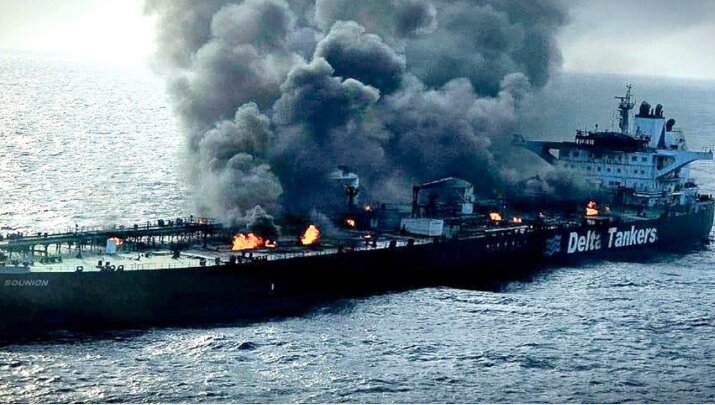Red Sea truce and Israel’s dilemma between Sanaa’s calculations and Trump’s priorities

LONDON - On May 7, 2025, U.S. President Donald Trump announced a ceasefire agreement with the Sanaa government, mediated by the Sultanate of Oman, aimed at securing navigation in the Red Sea.
While the agreement halts U.S. strikes on targets in Yemen in exchange for the non-targeting of American ships, Sanaa explicitly stated, and Trump confirmed, that the agreement does not include the occupying regime, meaning operations against ships linked to it will continue.
This development reveals the contours of a new regional scene in which U.S. priorities under Donald Trump’s leadership are being redefined, confirming that control over the Bab al-Mandab Strait today lies not with Washington or its allies, but with a resistance that imposes its conditions from a position of strength.
The agreement between Sanaa and Washington does not signify a U.S. withdrawal from supporting the occupying regime, but rather reflects the Trump administration’s desire to reduce its military involvement in Yemen and achieve relative stability in a vital maritime corridor that has faced repeated disruptions since the start of Operation “Al-Aqsa Flood.” The decision to halt direct confrontation with Sanaa reflects a pragmatic approach driven primarily by U.S. interests, independent of absolute commitments to its regional allies, even if that ally is the occupying regime.
The Red Sea: Militarization of a vital corridor and counterproductive outcomes
Operation “Prosperity Guardian” was launched in late 2023 under Washington’s leadership, ostensibly to protect ships from Sanaa’s attacks. However, Western military intervention escalated tensions and led to counterproductive results, forcing over 18 shipping companies to reroute via the Cape of Good Hope, increasing global trade costs, and disrupting supply chains.
In contrast, the recent ceasefire has significantly reduced attacks on ships unaffiliated with the occupying regime, allowing a limited resumption of maritime traffic, albeit cautiously, due to ongoing operations against the Zionist regime’s ships or those collaborating with it.
Symbolic escalation
Since late 2023, Sanaa has continued attacks using drones and ballistic missiles on cities deep within occupied territories, including Jaffa, Eilat, and multiple strikes targeting Ben Gurion Airport. Although the number of these attacks does not reach “a thousand,” as some claim, their psychological impact on the occupying regime’s settlers has been profound, forcing millions into shelters and disrupting the economic and security systems, reflecting a strategic failure to deter the resistance axis.
Targeting the vicinity of Ben Gurion Airport without damaging the airport itself demonstrated that the message was not solely about the number or precision of missiles but about the careful selection of targets. Sanaa aimed to showcase its technical and intelligence capabilities to strike sensitive facilities deep within the regime, while avoiding civilian casualties, to send a calculated message: The Dimona reactor, airports, and all critical infrastructure in the occupied territories are within Yemen’s line of fire whenever a decisive response is deemed necessary. This type of smart deterrence marks a strategic shift in the rules of regional engagement.
Conditional commitment
Despite continued U.S. military support for the occupying regime, Washington has not responded to Yemen’s attacks since the ceasefire, prompting some to speak of an implicit U.S. “abandonment.” The reality is that the Trump administration is balancing its support for its ally with its desire to avoid entanglement in a new Yemeni quagmire.
Sanaa’s ongoing attacks keep the door open for escalation, but any broad U.S. response will be subject to precise calculations tied to economic and domestic political considerations in a sensitive election year.
Despite U.S. and British bombardments of military sites, Sanaa retains advanced missile capabilities, including ballistic and hypersonic missiles like “Palestine-2,” used to target Ben Gurion Airport late last year.
What distinguishes Ansarallah from other resistance movements is their resilience within a failed state officially centered in Aden and their success in imposing deterrence equations despite blockade and foreign interventions. While warnings of a forthcoming “earthquake-like” strike against the occupying regime persist, these predictions remain within the framework of symbolic escalation, with no indications of a decisive strategic strike in the near term.
Military capabilities are entirely domestic
One of the most notable features of Sanaa’s military capabilities is their entirely domestic origin, despite over nine years of land, air, and sea blockade. Despite repeated claims that Iran supplies Ansarallah with weapons, the reality confirms that Sanaa has received no external military support—not because Tehran is unwilling, but because the nature of the blockade prevents it. Yemen’s leadership has developed an advanced arsenal of missiles and drones using local resources and indigenous expertise, demonstrating rapid technological accumulation, high adaptability, and continuous development.
Media discourse and Arab polarization
In the world of social media, the term “Arab Zionists” is commonly used to describe those who support the occupying regime or attack Sanaa. While these descriptions reflect popular sentiment against normalization, they obscure the complexity of the regional scene, where some Arab regimes align against the Axis of Resistance, while others attempt to distance themselves. Balancing discourse at this stage is essential to understanding the nature of alliances, away from emotional provocation and generalization.
Fragile calm and new equations
The ceasefire between Washington and Sanaa does not signal the end of confrontation but a reordering of priorities. Trump, with his “America First” policy, chose to de-escalate in the Red Sea to protect commercial interests, without placing all his eggs in the occupying regime’s basket.
Sanaa, however, continues its strategy of supporting Palestine and asserting its regional presence, fully aware of the magnitude of challenges.
The scene remains open to escalation possibilities, particularly if the occupying regime opts for a direct response or if the U.S. seeks to amend the ceasefire terms.
The question now is: Does this agreement mark the beginning of a broader U.S. retreat from the region? Or is it merely a tactical pause before a new round of confrontations? The answer hinges on the developments of the coming days or months.
Leave a Comment